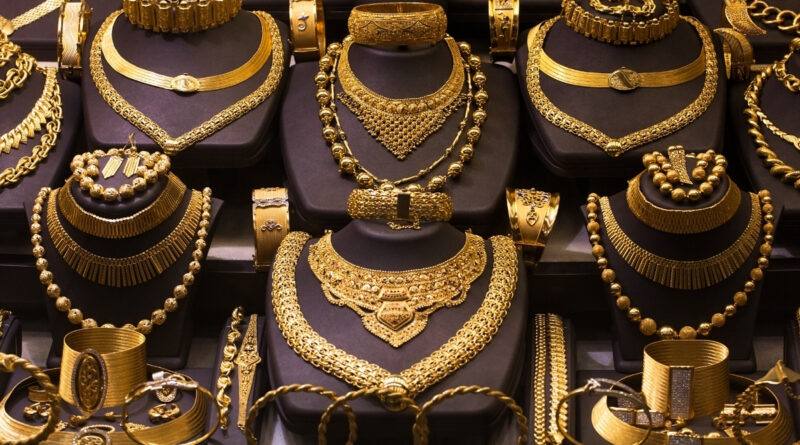Dubai Indian Gold Tycoons In A Sticky Wicket Now
Economy & Business | The WFY Magazine, September 2025
Dubai’s Indian Gold Tycoons Face New Tests Amid Shifting Rules
For centuries, gold has occupied a place of reverence in Indian society. It is woven into weddings, festivals, and financial planning, treated as both ornament and investment. In recent decades, this cultural affinity has shaped entire business empires in the Gulf, where Indian entrepreneurs have dominated Dubai’s bustling jewellery market.
Names like Malabar Gold & Diamonds, Joyalukkas, and Kalyan Jewellers have become synonymous with both trust and scale, building fortunes from the Gold Souk to glittering showrooms in the city’s mega-malls.
Together, these empires now command wealth measured in billions of dollars. Bloomberg recently valued the combined fortune of their billionaire founders at USD 9.5 billion for the first time, highlighting how deeply Indian families have embedded themselves in Dubai’s gold economy. Yet, despite such success, shifting global conditions and domestic regulatory changes in India are reshaping the ground beneath their feet.
From Humble Shops to Global Empires
The Indian presence in Dubai’s gold trade is not a recent phenomenon. It stretches back to the late twentieth century, when pioneers from Kerala and other parts of India recognised an opportunity in the Gulf. The combination of duty-free imports, assured quality, and a growing expatriate base created fertile conditions for jewellery businesses to flourish.
- Joyalukkas started as a small shop in Thrissur, Kerala, before expanding into the UAE in the late 1980s. Today, it runs 50 stores across the Middle East, with more than half of them in the Emirates.
- Kalyan Jewellers, a later entrant, opened in the Gulf in 2013 and now manages 36 outlets, posting Middle East revenues of USD 369 million in FY2024–25, a 22% annual jump.
- Malabar Gold & Diamonds, founded in 1993 by M. P. Ahammed, entered the Gulf in 2008 and has since grown to 67 outlets in the UAE, alongside stores in Saudi Arabia, Oman, Qatar, Bahrain, and Kuwait.
These networks are more than retail outlets. They are vertically integrated enterprises, managing supply chains, manufacturing, and even global marketing campaigns. Their reach extends well beyond the South Asian diaspora, attracting Arab and international customers too.
The Cultural Engine Driving Demand
Why did Indian jewellers dominate Dubai when competitors from other nations could have entered too? The answer lies partly in the cultural link between India and gold. For Indian buyers, gold is not simply decoration. It is a hedge against inflation, a traditional store of value, and a gift passed through generations.
With 7.2 million Indians visiting the UAE in 2023 and 3.5 million residing there permanently, according to India’s Ministry of External Affairs, the market was always guaranteed a large and loyal base. The Dubai Gold Souk, lined with hundreds of Indian-run shops, became an extension of Indian markets abroad. Weddings, religious festivals, and investment purchases ensured steady demand, while tourism added an extra boost.
It is no coincidence that these jewellers thrived by targeting both expatriate Indians and Arab customers, tailoring designs to cultural preferences while maintaining transparency and trust.
A Slowdown on the Horizon
However, the growth story is now facing new headwinds. In 2023, India reduced its import duties on gold, narrowing the price gap between domestic markets and Dubai. This eroded one of the Gulf’s historic advantages — cheaper gold.
The result was visible in sales data. According to the World Gold Council, demand for jewellery in the UAE dropped 16% by tonnage in Q2 2025 compared to the same period last year. Tourists from India, once the biggest buyers, have reduced purchases as the price benefit has shrunk. At the same time, global gold prices remain at record highs, deterring bulk buying.
The combination of duty changes, high prices, and weaker tourist inflows has already slowed momentum for Indian jewellers in Dubai. For conglomerates built on aggressive expansion, this is a warning sign.
Numbers That Tell the Story
- USD 9.5 billion: Combined net worth of the founders of Malabar, Joyalukkas, and Kalyan, according to Bloomberg.
- 16%: Drop in UAE jewellery demand (by tonnage) in Q2 2025, year-on-year.
- USD 369 million: Kalyan’s revenue from the Middle East in FY2024–25, up 22%.
- 67: Number of Malabar outlets in the UAE.
- 7.2 million: Indian nationals who visited the UAE in 2023, the highest among Gulf states.
- 4.4 grams: Per capita gold consumption in the UAE, the highest globally.
These figures illustrate both the scale of opportunity and the seriousness of the risks ahead.
Strategies for Survival and Growth
Faced with slowing demand, jewellers are pivoting in several ways:
- Diversifying Customer Base: While Indians remain their backbone, brands like Malabar have launched concepts such as Mojawhraty to attract Arab buyers with designs reflecting regional tastes.
- Expanding Manufacturing: Companies like Kalyan are exploring expansion of manufacturing in Dubai to navigate trade barriers such as U.S. tariffs.
- Cross-Border Expansion: Joyalukkas and Malabar are targeting Saudi Arabia, Qatar, and Oman, markets less directly impacted by Indian duty cuts.
- Mergers and Acquisitions: Titan Co., part of the Tata Group, recently bought a controlling stake in Damas International, signalling potential consolidation in the Gulf jewellery sector.
These strategies are not just about maintaining revenue; they are about future-proofing against changes in consumer behaviour, policy shifts, and global price volatility.
Indian Gold Giants in Dubai: A Comparison at a Glance
| Company | Founder & Origin | UAE Presence | Regional Expansion | FY2024–25 Revenues (Middle East) | Notable Moves |
| Malabar Gold & Diamonds | M. P. Ahammed, founded 1993 (Kerala, India) | 67 outlets across the UAE | 17 in Saudi Arabia; 39 in Oman, Qatar, Bahrain, Kuwait | Not disclosed separately | Launched Mojawhraty brand for Arab clientele; expanding GCC focus |
| Joyalukkas | Joy Alukkas, founded 1980s (Kerala, India) | 28 outlets in the UAE | 22 across Qatar, Oman, and other Gulf states | Not disclosed separately | Early entrant (1988) in Dubai market; building pan-Gulf retail brand |
| Kalyan Jewellers | T. S. Kalyanaraman, founded 1993 (Kerala, India) | 36 outlets in the Gulf | Primarily UAE, with selective expansion | USD 369 million | Considering Dubai-based manufacturing to bypass tariffs; strong growth in 2025 |
WFY Insight: Who Looks Best Positioned for the Future?
- Malabar Gold & Diamonds
Strength: Scale and innovation. With the largest footprint in the UAE and GCC, plus a new Arab-focused brand (Mojawhraty), Malabar is adapting quickly to diversify beyond Indian customers.
Challenge: Managing rapid growth across multiple markets while keeping margins strong in a high-price gold environment. - Joyalukkas
Strength: Legacy and loyalty. As one of the earliest Indian entrants in Dubai, Joyalukkas enjoys brand recognition and trust, especially among long-settled South Asians.
Challenge: Needs to modernise its approach and expand appeal beyond its core Indian community to stay competitive. - Kalyan Jewellers
Strength: Financial growth. Posting USD 369 million in Middle East revenues with 22% annual growth, Kalyan shows agility and a strong upward trend. Its manufacturing expansion plans in Dubai also show forward-thinking.
Challenge: Smaller footprint compared to Malabar; it must scale quickly to maintain momentum.
Verdict
If scale and diversification are the key to long-term survival, Malabar appears best placed to weather regulatory changes and shifting consumer trends. However, Kalyan’s recent growth rate makes it the one to watch in the coming decade.
The Bigger Picture
The challenges facing Indian jewellers in Dubai reflect a broader reality: global businesses cannot depend on a single cultural or regulatory advantage forever. Duty differentials may vanish, tourist flows may fluctuate, and consumer preferences may evolve. What sustains long-term growth is adaptability, innovation, and geographic diversification.
For Indian entrepreneurs, the Gulf will remain a critical market. Its proximity, tax-friendly environment, and large diaspora ensure continuing relevance. But future expansion may depend on winning customers beyond the South Asian community, developing luxury niches, and integrating technology such as online platforms and digital gold investments.
Concluding thoughts
The story of Indian jewellers in Dubai is a classic tale of cultural affinity meeting entrepreneurial drive. From small shops in the 1980s to billion-dollar empires today, these businesses have transformed the city’s gold market and made fortunes for their founders. Yet, with changing tax regimes, record-high bullion prices, and shifting consumer patterns, they are now at a crossroads.
The coming years will test whether these brands can reinvent themselves to serve broader global audiences while staying true to their Indian roots. If they succeed, Dubai will continue to sparkle with the names of Malabar, Joyalukkas, and Kalyan for decades to come.
© The WFY Magazine | The WFY Bureau Desk |
Disclaimer: This article has been written in original words for The WFY Magazine using publicly available information up to September 2025. It avoids direct quotations from third parties. The analysis is for general awareness and understanding of economic trends, not financial advice.




